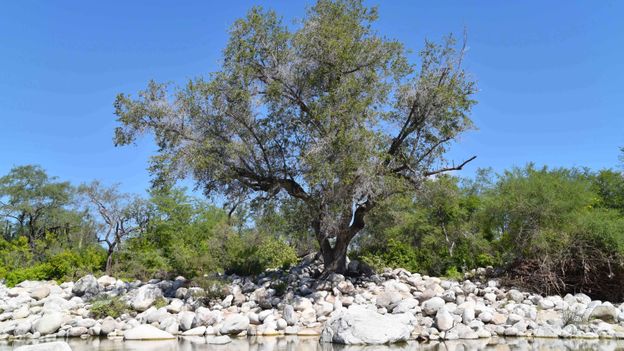We do know, however, that they play a vital role in our ecosystems. Fungi decompose dead material into the building blocks of new soil. Fungi can also break down living material too – including trees. Fungi are the main drivers of wood decay, and a crucial resource for many invertebrates is a living tree with columns of fungal decay in the heartwood.
Heart-rot fungi only move in when trees are mature, feeding on the dead wood at the centre of an ancient tree. When holes begin to form, the wood softens then insects and other species such as woodpeckers are able to excavate it further. Over time, a hollow forms and the cavity floor is lined with wood mould, a rich soil-like mulch.
“Heart-rot species are key,” says Rutter. “These fungi are able to break down the lignin, the very hard part of the wood which is normally incredibly indigestible. Many heart-rot fungi happily eat the central dead wood without harming the living tissue on the outside – and can co-exist with a tree for 600 or 700 years. We want a tree to live a long time so the habitats can continue for as long as possible.”
To try and mimic this process in younger trees, Ancients of the Future is growing heart-rot fungi on blocks of wood in the lab, inserting the blocks into holes cut in young trees and recovering them with bark. They are left that way for a few years, then the blocks are removed to see if the fungi have taken hold inside the tree.
The project is not the first to try this technique – fungi inoculation has been trialled before in North America where researchers found that fungal inoculation could reduce decay time from 100 years to just three when used in combination with traditional methods.
Boddy explains why this new method of veteranisation may work better than previous methods: “We’re putting the fungi we want where we want it, rather than just hoping it turns up.”
She explains that the hollowing of ancient trees by fungal decay, previously seen as detrimental, is a natural part of the ageing process and can even prolong the lives of trees, feeding them nutrients from the inside.
Boddy’s team has been using a new, minimally damaging DNA sampling technique to analyse the inoculated wood. It means the researchers are able to take a much smaller sample from the tree and get much more detailed information.
“Fungi are all around us,” says Boddy. “Inside every tree trunk, every leaf, every stem, every bit of plant that’s decaying on the floor, in the soil beneath our feet. But we can’t see them which makes studying them very difficult. Now that we can extract DNA we can see exactly what’s there.”












